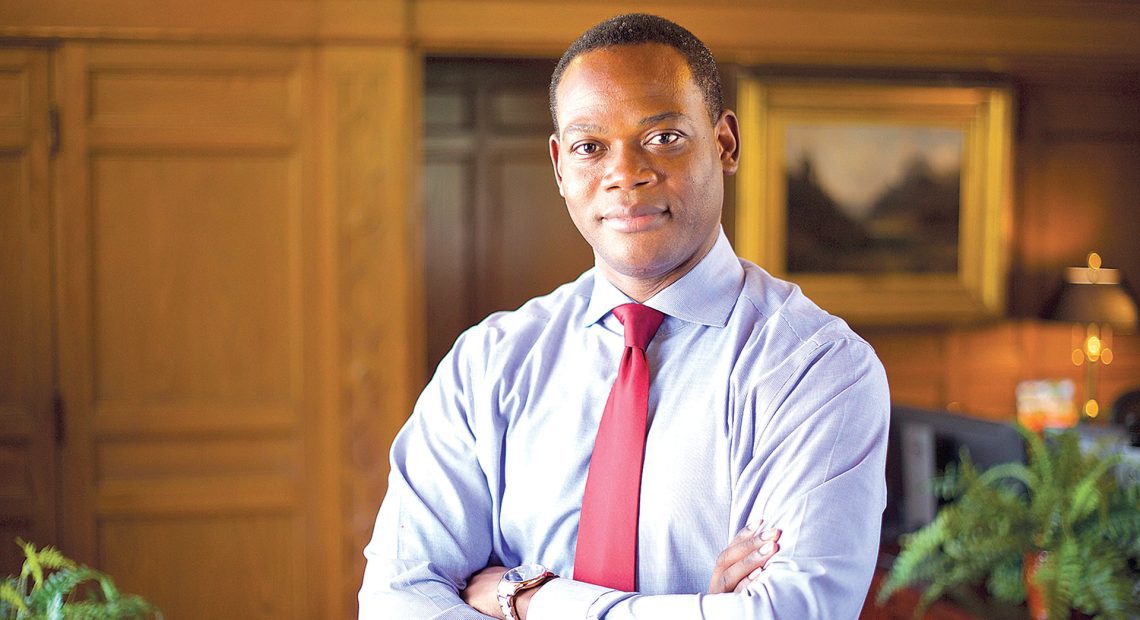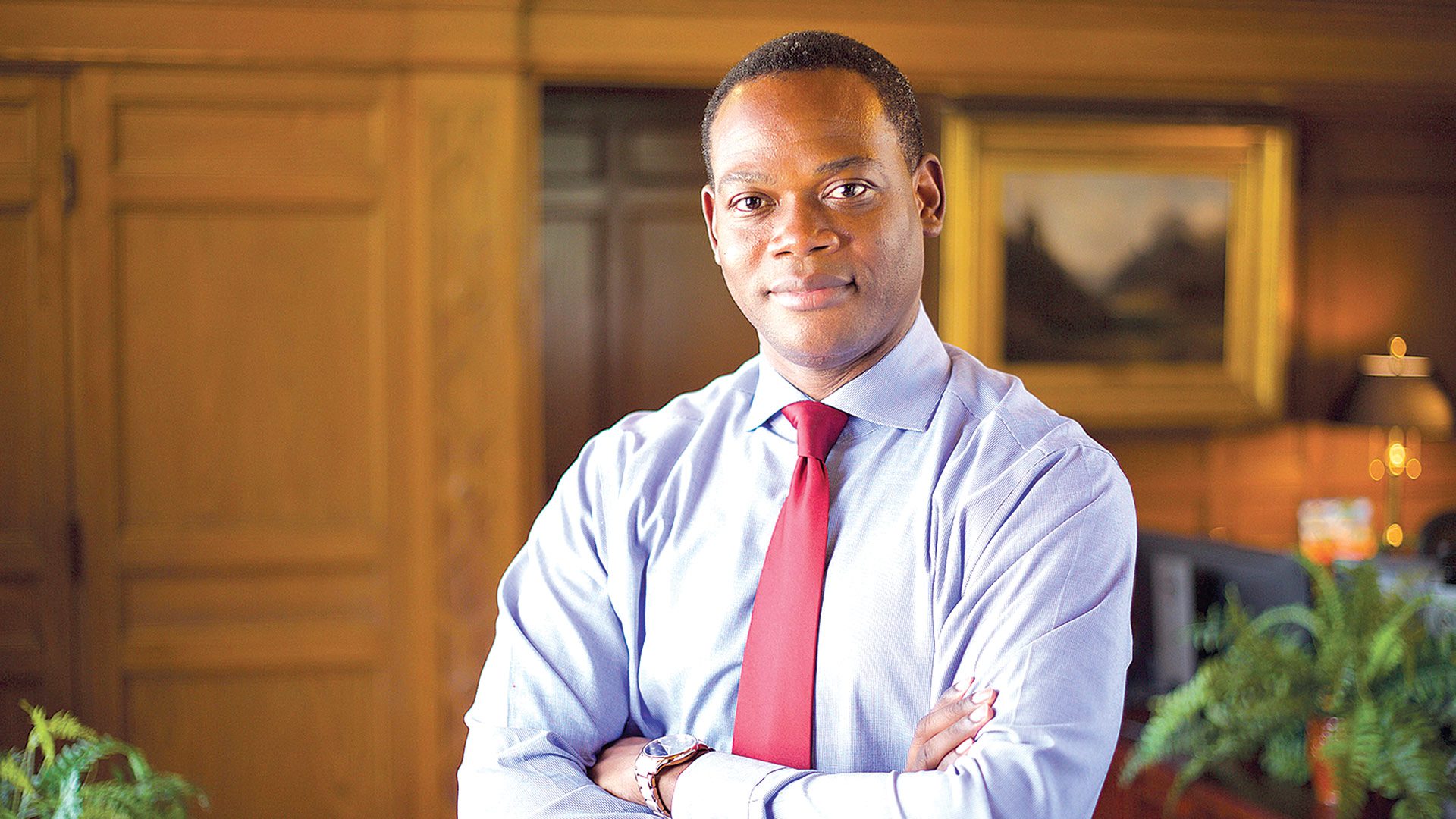
Even Without Race-based Admissions, Colleges Aim to Cultivate Diversity
Embracing Differences

Harry Dumay says some race-conscious policies have benefited both colleges and students over the years, even if Elms College doesn’t employ them.
Harry Dumay said he was disappointed, though perhaps not surprised, when the U.S. Supreme Court struck down the use of race-based criteria in college admissions on June 29.
At the same time, he said the ruling wouldn’t change anything at Elms College, where he serves as president.
“We do not use race-conscious policies in admissions,” he explained. “The way we go about having a diverse student body — and we are very satisfied that our student body has been increasingly diverse — is by projecting the idea that we are a campus where everyone is accepted, everyone is embraced, and everyone belongs.”
Elms recruits heavily from Greater Springfield and the broader Western Mass. region, as well as Connecticut, areas that are already demographically diverse, he noted. “We attract those students by creating an atmosphere on campus where every student feels this is the place where they’re valued and where they belong, so all students can benefit from the additional educational advantages of being in a diverse campus environment.”
“We sought legal counsel on whether we should be changing our practices, and also whether this would hamper us in achieving our mission of having a diverse student population, and it doesn’t.”
When the SCOTUS ruling came down, Dumay added, “we sought legal counsel on whether we should be changing our practices, and also whether this would hamper us in achieving our mission of having a diverse student population, and it doesn’t. We will continue to have a campus where all people, faculty, students, and staff feel that they belong, and feel the diversity that they bring is embraced.”
His sentiments were reflected across the region by college and university leaders who felt the court’s ruling was creating barriers to opportunity — affirmative action began in the 1960s as a tool to prevent discrimination at selective institutions, and has been used as an admissions tool ever since — but stressed that their own policies would continue to promote a diverse student body in lawful ways.
“While we have been anticipating and preparing for this outcome for some time, the court’s decision dismantling affirmative action in college admissions marks a historic and challenging moment for all of higher education, including institutions such as ours that are deeply invested in inclusive education,” said Kumble Subbaswamy, outgoing chancellor at UMass Amherst. However, “while the court may require us to change our methods, it cannot change our mission.”
Kumble Subbaswamy
“While the court may require us to change our methods, it cannot change our mission.”
Noting that university leaders will work closely with the UMass Office of General Counsel to ensure the admission process continues to reflect those values while operating within the boundaries of the law, he also cited the campus mission statement, which reads, “we draw from and support diverse experiences and perspectives as an essential strength of this learning community and accept for ourselves and instill in our students an ongoing commitment to create a better, more just world.”
To achieve this end, Subbaswamy explained, the admissions process has, for the past decade, employed a holistic approach that considers the entirety of an applicant’s life experiences. “Holistic admissions, which does not use race as a determinative factor, has served us well. Since 2011, the percentage of students of color in the incoming class has grown from 21% to 37%.”
Dumay, like most college presidents in Western Mass., was among more than 100 leaders from higher education, advocacy organizations, and the Massachusetts Legislature who signed a letter on June 29, the day of the SCOTUS decision, criticizing it.
“Massachusetts will always be welcoming and inclusive of students of color and students historically underrepresented in higher education. Today’s Supreme Court decision overturns decades of settled law. In the Commonwealth, our values and our commitment to progress and continued representation in education remain unshakable,” it reads. “We will continue to break down barriers to higher education so that all students see themselves represented in both our public and private campus communities. Massachusetts, the home of the first public school and first university, will lead the way in championing access, equity, and inclusion in education.”
Kerry Cole
“This doesn’t actually change our fundamental admission structure. But there are changes I think the industry can make to stop putting up additional barriers for certain populations of students.”
Even if the ruling doesn’t change practices at Elms, Dumay told BusinessWest, he is concerned about the broader higher-education sector.
“Studies have demonstrated the value of diversity,” he noted. “Studies have demonstrated that, without some race-conscious policies, elite institutions are not succeeding at recruiting a diverse student body. In the broader higher-education sector in general, one has to be concerned about the Supreme Court decision, but at Elms, we’ll continue to fulfill our mission to make sure that we have a very diverse and inclusive campus.”
American International College President Hubert Benitez released a statement following the ruling that struck a similar balance between concern over the ruling and a conviction that AIC doesn’t need affirmative action to be diverse.
“The Supreme Court’s decision will have minimal impact on AIC, as the college has always operated based on core values that prioritize access, opportunity, and diversity,” he noted. “Given our student demographic, diversity naturally thrives at AIC, and we must continue to serve this diverse population.”
Evolving Legacy
Kerry Cole, AIC’s director of Admissions, reiterated to BusinessWest that the college’s process will not change. “We have a holistic admissions process. We naturally have diversity within the student body, and we’re very fortunate, and we embrace that. So this doesn’t actually change our fundamental admission structure. But there are changes I think the industry can make to stop putting up additional barriers for certain populations of students.”
One of those, she said, is for colleges to start moving away from legacy admissions, which historically have not benefited minorities. Another is to recruit in all geographic areas, including low-income areas, because successful students can be found in all types of communities. “We heavily recruit in Hampden County, followed by Hartford County, and those are areas that are extremely diverse.”
Hubert Benitez
“Given our student demographic, diversity naturally thrives at AIC, and we must continue to serve this diverse population.”
Over the past decade, Subbaswamy noted, UMass Amherst has significantly broadened its recruitment efforts across every demographic. “Since 2012, our Admissions team has recruited and received applications from underrepresented students from 66 additional high schools in Massachusetts alone. We have also partnered with more community-based organizations to help us recruit and enroll a more diverse class, including lower-income and first-generation students. We will also continue to work with our partners in the state and federal government to develop funding for pipeline programs and advocate for financial-aid investments.”
UMass and other institutions are doing this because of a shared belief that a diverse campus creates a sense of inclusion and belonging, which in turn promotes a healthy environment for everyone.
“We will continue to implement data-driven initiatives and procedures to ensure students of all backgrounds experience a strong sense of belonging and inclusion in our community,” Subbaswamy said. “We want every prospective student, no matter their background, to see their values reflected across the institution and recognize UMass as a place where they will thrive.”
Even absent the SCOTUS ruling, he added, “our commitment to upholding our values of diversity, equity, and inclusion would drive us to deepen our investments in recruiting and welcoming students from diverse backgrounds.”
Dumay agreed, arguing that a diverse student body reaches into the community, creating a more robust Western Mass., and the Supreme Court’s ruling only strengthens Elms’s resolve to enhance representation of all kinds.
He conceded that the ruling mainly impacts colleges that admit only a small percentage of their applicants. At Elms, which admits all students who have demonstrated they can do the work and succeed there, diversity efforts are a matter of attracting more applicants, as opposed to making tough decisions to admit or reject equally qualified students. “If you can do the coursework, regardless of race, you are admitted. We do not use any race-conscious policies in our admissions.”
However, he emphasized that the court’s ruling narrowly focused on the use of race in admissions at Harvard University and the University of North Carolina; it did not reject the importance of campus diversity itself, only certain means to achieve it.
“That is a great comfort to us because diversity is part of the Elms College mission statement,” Dumay went on. “The statement says that Elms serves a diverse student body in a nurturing educational environment. That is part and parcel of our mission: to foster an atmosphere that is diverse.”
Benitez added that AIC’s mission is to educate next generation of a diverse regional workforce, making a diverse campus an issue of economic development.
“What do we want in a student body? What do we want our classes to look like?” Cole added, noting that AIC recently launched a guaranteed-admissions initiative to qualified students, designed to ensure a fair and transparent admissions process for students who meet eligibility requirements.
As opposed to race-based admissions practices, AIC assures that all prospective freshmen applying to AIC will be admitted, provided they fulfill certain academic requirements. “We bring more transparency to the process,” she noted. “We at AIC don’t have the same challenges as some institutions, but it’s really important for us to show transparency.”
New Ways Forward
Late last month, the U.S. Department of Education drew more than 100 academics, government officials, and administrators to a National Summit on Equal Opportunity in Higher Education, where discussions touched not only on the post-affirmative-action landscape, but whether there should be change in the practices of legacy admissions and preferences for family members of donors.
According to the New York Times, attendees discussed the importance of developing and expanding tools to achieve diversity beyond race-based admissions, including recruiting through academic-enrichment programs for talented low-income students; improving financial aid; initiating direct admissions, or automatically admitting students who have met certain threshold requirements, as AIC has done; bringing disadvantaged students to campus to generate interest; and making it easier for community-college students to transfer to four-year colleges.
“We’re very committed to access, opportunity, and diversity as the foundation of the institution — it’s who we are,” Cole said. “We’re always making strategic decisions as an institution to make sure we’re able to maintain that, and to support all students moving forward.”
After all, people learn more amid different perspectives than in a homogenized environment, she said, and that goes for more than just students.
“I’ve been at AIC since January 2014. I learn things from the student body every year, even every day. It’s really important for folks to learn from each other and have a diverse campus like AIC,” she told BusinessWest. “We’re constantly learning, using different lenses when we looking at problems and issues. There’s a huge benefit to diversity on campus.”







